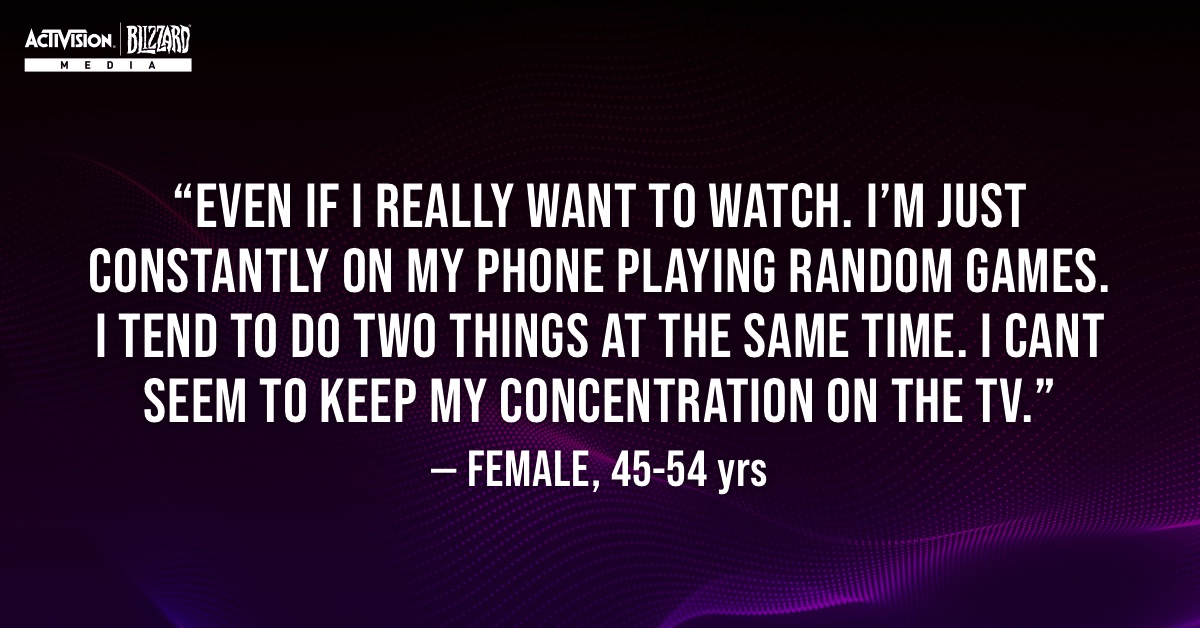With a general shift in media consumption habits, advertisers are constantly looking for new and innovative ways to reach their target audiences. Fortunately, the in-game advertising market has emerged as a potential solution, writes Activision Blizzard Media's Jordan Shlachter
What is in-game advertising, and how does it work?
In-game advertising is a type of marketing that places advertising messages and content within video games. It can appear in static or animated billboards, product placements, or even interstitial video ads featured between bouts of active gameplay. The ultimate goal of in-game advertising is to reach gamers who are actively engaged in playing a game in a way that is non-intrusive and does not interfere with the game environment.
Mobile games are particularly well suited to in-game advertising, as they are typically played in short bursts, and players are more likely to see the ads due to how mobile games are designed. In-game advertising can also be featured on gaming consoles and in PC games, though it is less common due to the longer play sessions and a greater variety of gameplay experiences.
What are the benefits of using in-game advertising as a marketing strategy?
Unlike traditional advertising, in-game advertising allows marketers to reach their audiences where they are most engaged and active, making it a more dynamic and flexible form of marketing. Moreover, in-game advertising can create a more immersive gaming experience, leading to higher engagement, awareness, and ad recall.
For example, some in-game ads allow players to redeem coupons or discounts for advertised products. Others may include interactive elements such as minigames or quizzes. These dynamic formats within a video game often give brands a much easier way to reach a leaned-in audience.
Why is now the best time for advertisers to get involved with in-game advertising?
A recent study by Activision Blizzard Media entitled, The Engagement Game: How Gaming Has Transformed Entertainment Consumption, revealed that audiences are increasingly consuming multiple sources of entertainment simultaneously, with 85% of people watching TV with another device in hand. This is especially true for gamers, with 91% of gamers viewing TV with a second screen in hand.
The Engagement Game also revealed that gaming is the number one second-screen activity for gamers, with more than half of gamers using a mobile device to play a game while watching TV. In fact, only one-third of respondents from the study claimed to pay attention to TV ads. And with competing activities happening while audiences are watching TV, including gaming, social media, and texting, it's clear that consumers will happily transfer their attention elsewhere to proactively avoid advertising.

Even the most active TV viewers (those watching live or streaming TV at least weekly) skip TV and video ads whenever possible (60%), with gamers avoiding ads at a similar rate (61%). Younger audiences are more likely to opt for premium, ad-free experiences, which enforces the notion that they are typically harder to reach through traditional forms of media.
This ultimately means that understanding entertainment consumption habits is key to engaging with one of the most dedicated target audiences out there. But brands who have taken the time to understand the gaming audience and provide custom and native solutions have been rewarded with high engagement and brand recall.
How can brands make sure that their in-game ads resonate with gamers?
Here are a few best practices for creating an effective in-game advertising campaign:
- Choose the right game: Not all games are created equal when it comes to in-game advertising. For example, if a brand is trying to reach a young male audience, a mobile sports game or shooter like Call of Duty: Mobile might be an ideal choice. On the other hand, if an advertiser is targeting a more general audience, then free-to-play games like puzzle or strategy games such as Candy Crush may be a better option.
- Optimise the creative for the environment: Mobile games are typically played on smaller screens with shorter attention spans, so it's important to make sure that ad creative is designed specifically for this type of platform. This may mean developing custom ad units that match the look and feel of the game or using short video ad formats that are easy to digest.
- Use ad placements that are non-intrusive and authentic to the game experience: In-game ads should not disrupt the gameplay experience nor interfere with the user's ability to progress through the game. A better option would be to use an ad format like a rewarded video ad to offer something of value. Players are more likely to engage with in-game ads if they provide a tangible or actionable reward, such as discounts on in-game items or exclusive content that gamers can only access by watching the ad.
- Consider the target audience: When creating an in-game ad campaign, it's essential to consider who the intended audience is. What are their gaming habits? What kind of mobile games do they like to play? What do they respond to in advertising? By understanding the target audience, brands can create ads that are more likely to resonate with the gaming community.
Advertisers have long been searching for new and innovative ways to reach their target audiences, and dynamic in-game advertising is proving to be a successful method. With its ability to be interactive and flexible, in-game advertising allows marketers to reach their audiences where they are most engaged and active. In addition, as audiences continue to consume multiple sources of entertainment simultaneously, it is increasingly important for advertisers to ensure their ads are relevant to the native experience and their target audience.
Posted on: Tuesday 6 December 2022